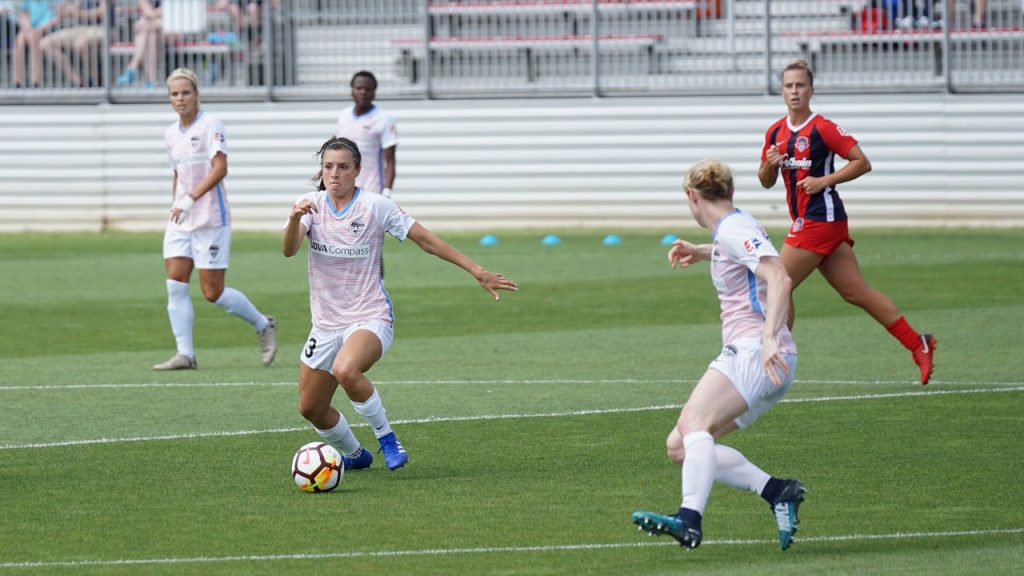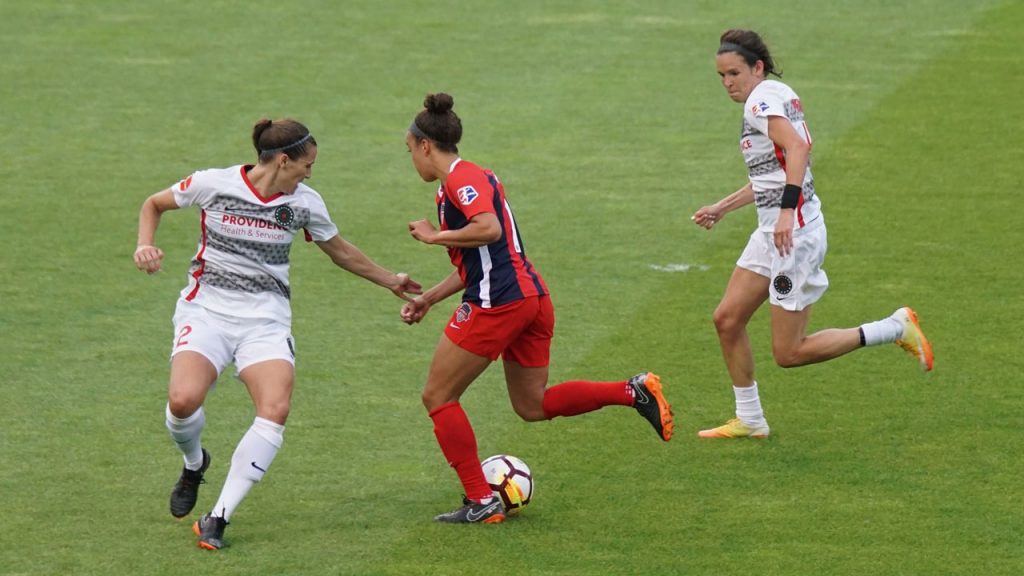Authority Soccer (authoritysoccer.com) is a participant in the Amazon Services LLC Associates Program, an affiliate advertising program designed to provide a means for sites to earn advertising fees by advertising and linking to Amazon.com. This site also participates in other affiliate programs and is compensated for referring traffic and business to them.
In 2010, after losing his place in the Bayern Munich first team, the defender Martin Demichelis had to pick between playing midfield or being a substitute. He chose to be transferred.
Bayern’s Honorary President Franz Beckenbauer commented, “Demichelis wants to play defense to avoid running too much; he should play in a suit and tie.”
Is it true, defenders run less? What position in soccer runs the least (and what the most)?
The position that runs the least in soccer is the goalkeeper. Among the field players, those who run the least are central defenders, sweepers (or libero), and creative midfielders. The ones that run the most are side defenders, defensive midfielders, and forwards.
In soccer, some positions require less physical effort than others. Still, it is not a rule with mathematical precision; each team’s style of play determines who will run more or less in a squad.
For instance, a soccer team that waits in its own field will demand a massive effort from midfielders and forwards. The opposite will happen with a team that stands on the rival’s field; defenders will have to cover more terrain.
What position runs the least in soccer?
We will let the goalkeepers out of this discussion for obvious reasons. Although we must be careful, goalkeepers might not run long distances, but they need to train vigorously, maybe harder than the rest of their teammates.
A goalkeeper must be quick and explosive. Their apparitions in games are as short as decisive. They need to be ready to jump from one post to the other, stand up immediately, and jump again to the other post. But we’ll let them out of this one, for now.
Many positions in soccer are more about positioning than running. Other positions require fresh legs for accuracy and an aired mind to decide correctly.
That being said, each team’s style will also demand more from some players and less from others. Let’s see who are the ones less obligated to run.
1. Sweeper
The sweeper, or libero, plays between the central defenders and the goalkeeper. The area they’re responsible for is the smallest. Playing as a sweeper is more about positioning correctly and cutting edges to the ball.
That is why sweepers were mostly experienced players, defenders over 34 or 35 years. It is a position less used in modern soccer; it was more frequent in the past.
Great names like the Italian Franco Baresi or the Dutch Danny Blind played in this position, or the midfielder converted to sweeper, the legend Lothar Matthäus from Germany.
2. Central defender in a defensive team
A team that plays defensive soccer spends a significant portion of the 90 minutes in its own field, near to its box.
Central defenders don’t go out of their box a lot; they are waiting for crosses or passes inside the box the kick or head the ball away from danger.
3. Creative midfielder, the trequartista or “enganche”
The creative midfielder is a talented player, skillful, and very technical. It is usually the brain of the team, the one that sees the game differently.
They need to have fresh legs to shoot to the goal and to make surgical passes. They also need to have a clear mind; too much running clouds the mind, it is not possible to think clearly when agitated.
That’s why coaches not demand too much physical effort from these players.
4. Poacher
The poacher or typical number 9 doesn’t have a lot of defensive responsibilities. Maybe disturb them a little bit the defenders when they have the ball, and not much more.
When attacking, the poacher’s job is to wait for the ball inside the box and score. A poacher who doesn’t score often will help more in defense, motivated, perhaps, by guilt.
What position in soccer runs the most

As we said above, each team’s style will demand more from certain players than from others. These are the positions that require a more significant effort.
1. Carrilero or shuttler
This position is relatively new in tactical terms. It became popular in Italy in the 90s, that time’s epicenter of European soccer, where teams played a lot with a 3-5-2 formation.
The defensive line with only three players required extra help from the sides, so the two side midfielders would go all the way down to help defend.
When attacking, as the team needed width, the carrileros would go to the end of the rival field to cross or to finish the plays. To play in this position, a player needs to be tireless.
2. Central defenders playing for offensive teams
When a team spends most of the time pressing on the rival’s field, its defenders play in the half-court. This image is evident in any Barcelona match against a minor team in La Liga.
Barça’s central defenders stand advanced in the field, which means that they need to cover at least a 50 meters distance every time the rivals attack. Every single time.
3. Forwards in defensive teams
When a team’s style is to wait in its own field, forwards receive nothing but long balls, and they need to handle the entire rival defense plus chase the ball like crazy.
Solo forwards have it even worse; they need to pursue the rivals when defending and then run after every long pass; it is exhausting.
4. Modern wingers
In the past, wingers were attacking players. But that changed slightly; nowadays, it is a winger’s responsibility to chase the side defenders when they attack.
Winger’s primary duty is still attacking, but they can’t look aside when the rival team advances; they need to help.
5. Defensive midfielders
In Brazil, they’re called “the hunting dog.” A defensive midfielder chases everyone approaching the middle of the field through the center, everyone.
They also have to occupy a defensive position when central defenders decide to go for a heading during a corner or a free-kick.
6. Side defenders
Left and right defenders usually cover long distances every game. They are essentially defenders, but they need to offer support and be an option in attack.
When the team is attacking, they need to help create danger, perhaps wall passes or crossing. And when their team loses the ball, they have plenty of defensive responsibilities.
Best soccer position for slow players

Slow players can play soccer, even in nowadays physical and frenetic soccer. In most cases, a soccer player’s life offers some balance, and as they lose speed, they gain experience, and they read the game better.
1. Sweeper
Slow players can act as a sweeper. Their timing must be on point since they play near their box, and they need to cut advances precisely and without committing fouls.
2. Creative midfielders
A creative midfielder can be slow as well. Their soccer doesn’t depend on their speed but on their precision. The Colombian Carlos Valderrama or the Argentinian Juan Román Riquelme weren’t fast at all.
3. Forwards
Some forwards can resign speed in their game too. If they are skillful enough, and most importantly, if they score, no one will ever complain about their poor speed.
Best soccer position for fast players

Fast players can play virtually everywhere. It is possible to find space for a slow player in a team, but speed will never be a problem to play in any position. Although some positions benefit from fast players.
1. Winger
Wingers depend a lot on their speed. Their main job is to get to the end of the rival’s field and cross the ball to the forwards, so they need to be fast.
They play a lot one-on-one against side defenders, and their primary weapon is throwing the ball far and running.
2. Side defender
Essentially, every side player should be fast. Those who attack the sides, the wingers, tend to be the quickest players in the team.
Therefore, the left and right defenders, who are supposed to chase the wingers, must also be fast.
3. Defensive midfielder
As the “hunting dogs” must chase everyone in the midfield, the faster they can travel, the better. Defensive midfielders also function as “spare tires” of their teams.
This means that when a teammate is out of position for any reason, it is the defensive midfielder’s job to occupy that vacant position. Speed will be handy in that function too.
4. Forward
A forward doesn’t have to be fast necessarily. There are plenty of top goalscorers that don’t stand out for their speed, like Miroslav Klose, Zlatan Ibrahimovic, or Alvaro Morata.
But it won’t hurt if they are fast; it can give them more chances of scoring. Just to mention some quick forwards, Arjen Robben, Mohamed Salah, Ronaldo, among others.
5. Carrilero or shuttler
For this relatively new position in soccer, speed could be an advantage. As they have to cover massive portions of the field, being fast could be handy.
The carrilero has defensive and offensive responsibilities, and the quicker they can be in their position, the better.
In conclusion, running is necessary to play soccer. One can’t exist without the other.
But it doesn’t matter if you tend to run little or a lot, fast or slow, there is a perfect position for you in every soccer team.

